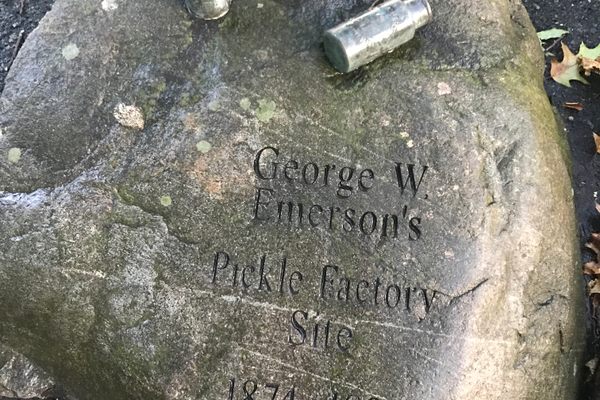Sagamore John Burial Monument
The monument is inscribed, "To Sagamore John and those Mystic Indians Whose Bones Lie Here”.
There are many historical monuments scattered across the state of Massachusetts but a memorial located within a residential neighborhood in Medford has its own unique twist on it. Unlike other memorials where one might find a statue of a person, animal, or historical symbol on top of it, this one has a boulder. This monument carries with it a tragic backstory.
It is dedicated to Native American leader Wonohaquaham who was a paramount chief or Sachem within the Pawtucket Confederation when the English began to settle what is now Massachusetts in the 17th century. According to historical records, Wonohaquaham is described as being friendly and cordial towards the English settlers giving them permission to settle in the present-day Charlestown area in 1627. The natives taught the settlers how to grow corn and in return received seeds from Europe. They also traded various furs and skins and the rich soil produced abundant amounts of fruits and vegetables.
By 1631, Wonohaquaham, who was called “Sagamore John” by the colonists with Sagamore being a native term for another type of chief, spoke fairly good English and wore European-style clothing. He was also known to warn settlers of impending attacks by other unfriendly tribes and attempted to use the English court system to resolve disputes often with mixed results. Most cases never made it to court but in one instance he was awarded seven yards of cloth from Richard Saltonstall, one of Watertown’s earliest settlers, and 50 shillings from Saltonstall’s servant after he burned down a couple of Pawtucket wigwams. Wonohaquaham also showed interest in Christianity which earned him the scoff of other natives and although colonial magistrate Thomas Dudley had hoped he would convert and join the settlers permanently, Wonohaquaham chose to remain with the Pawtucket.
Around December 2, 1633, Wonohaquaham and around 30 of his people died of smallpox. A terrible disease brought over by the settlers he worked so hard to mutually and peacefully coexist with. In the following decades, as the number of English settlers increased and began encroaching further into Indigenous territory, friendly relations between the two groups began to deteriorate which ultimately culminated in the devastating King Phillip’s War which ravaged New England in the 1670s. In the 1880s, workers in Medford discovered the remains of 18 Native Americans which at the time were believed to be the remains of Wonohaquaham and some of his followers. However, historical records seem to indicate he died in current-day Chelsea, which was called Winnesimmet at the time and the remains might belong to his father Nanepashemet who died in the Medford area around 1619. Regardless, a 10-foot monument dedicated to Wonohaquaham and his followers was erected near the burial site.
Although it may appear ordinary and unassuming, the Sagamore John Burial Monument tells a powerful story of Massachusetts’ early history and the dynamic between Native Americans and European settlers. Wonohaquaham dedicated his life to building a stable and healthy relationship with the colonists but was killed by a foreign disease he and his people had no defense against and much of his work and legacy was torn apart by the ravages of war decades later. If you would like to pay your respects to an important man much of history has forgotten, the burial monument in Medford is definitely worth a visit.
Know Before You Go
The monument is located in a fairly spacious residential neighborhood with lots of areas to stop for a few minutes to see the monument.
Plan Your Trip
The Atlas Obscura Podcast is Back!




















Follow us on Twitter to get the latest on the world's hidden wonders.
Like us on Facebook to get the latest on the world's hidden wonders.
Follow us on Twitter Like us on Facebook